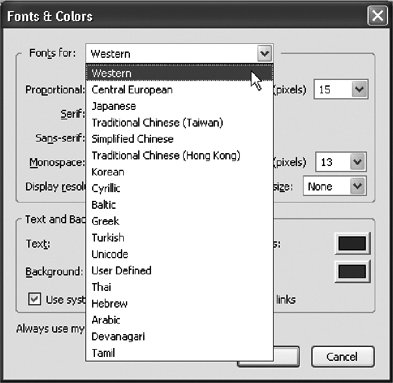1.10. Summaries The following summaries use very concise language, and they are hardly understandable in isolation. However, having read the text of this chapter, you may find them useful and return to them later. The terminology related to characters varies quite a lot, so the summaries help in checking out how this book names things. 1.10.1. Summary of Definitions Following is a list of terms you may come across:
Character A basic unit of textual information, as abstract concept, as opposed to stylistic and typographic variation between shapes that can be identified as the same character.
Character code A mapping, often presented in tabular form, that defines a one-to-one correspondence between characters in a character repertoire and a set of nonnegative integers.
Character encoding A method (algorithm) for presenting characters in digital form by mapping sequences of code numbers of characters into sequences of octets. Encodings have names, which can be registered. Figure 1-26. Menu of contexts for font settings in a version of Firefox 
Code number The integer assigned to a character in a character code. Synonyms: code position, code value, code element, code point, code set value, code.
Character repertoire A collection of distinct characters. No specific internal presentation in computers or data transfer is assumed. The repertoire per se does not even define an ordering for the characters; ordering for sorting and other purposes is to be specified separately. A character repertoire is usually defined by specifying names of characters and a sample (or reference) presentation of characters in visible form.
Glyph A basic unit of visual rendering of charactersi.e., a particular visible presentation of a character, or part of character, or pair or sequence of characters.
Octet A sequence of eight binary digits (0 and 1) treated as a unit.
1.10.2. Summary of Concept Levels We can consider a character, say @, at different conceptual levels, or levels of abstraction:
Character as an abstraction The idea of a particular character, in the mind of an individual and in social usage. For example, whatever @ suggests to you, or your friends, or people in your country.
Character as defined in a specification A particular definition of a character, aimed at making the idea explicit and communicable. The definition can show some glyph(s) for the character, name it (e.g., "commercial at"), describe it verbally, and list its properties in some general framework.
Coded character A character as defined in a specification together with its code number in some system of such numbers. In most systems, the number of @ is 40 in hexadecimal. The number can be used as a concise way of referring to the characters, often using some special notation like 0x40 or U+0040.
Encoded representation A particular internal representation of the code number of a character, and hence of the character. This depends on the encoding used. For the @ character, the representation could be the octet 40 (hex) alonei.e., the bit sequence 00001000. In another encoding, however, it could consist of two octets, 00 and 40.
Glyph A rendering of a charactere.g., @ or @ or @.
|
